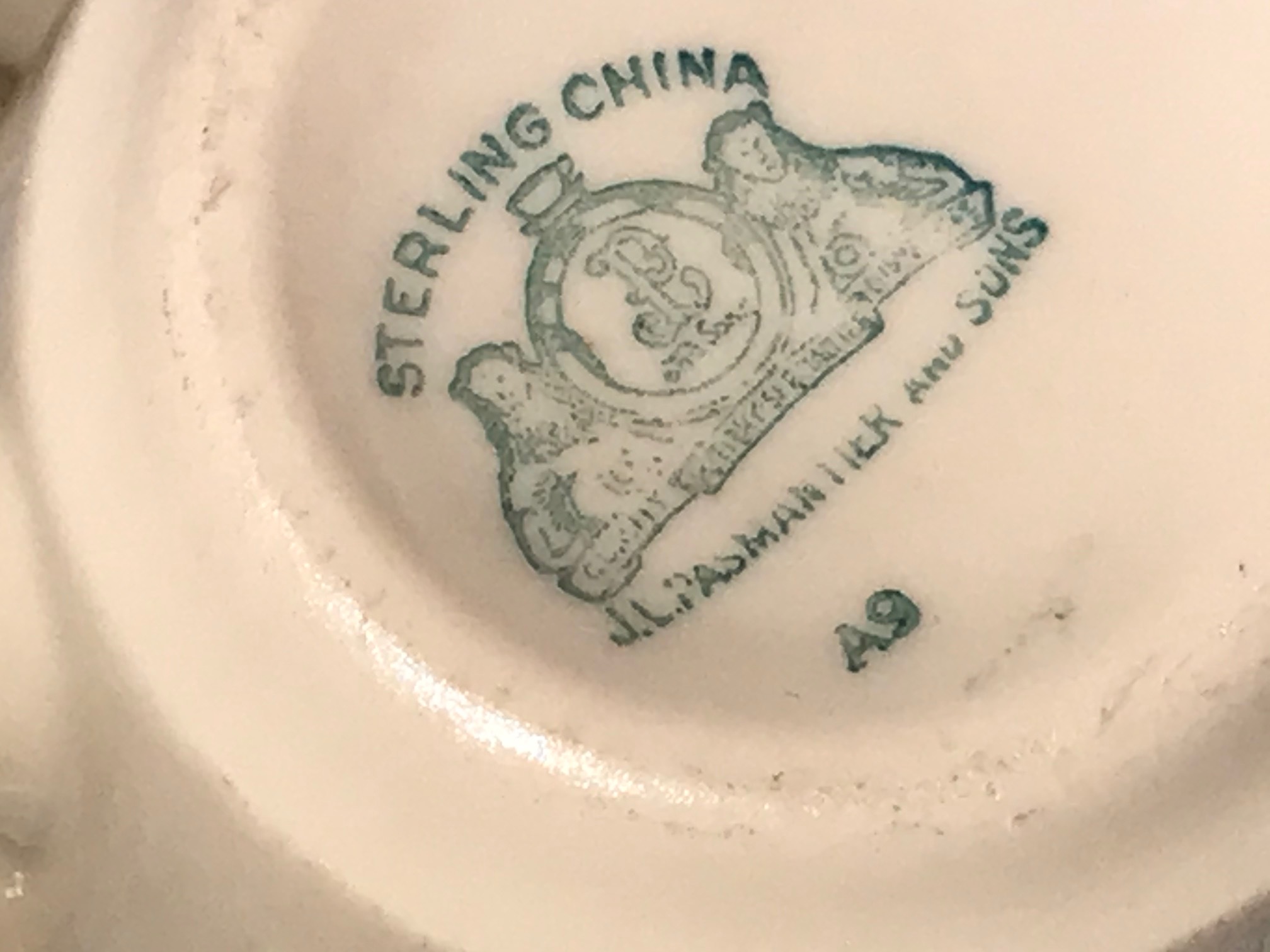Vintage Sterling China Cup & Saucer: 37,500 ppm Lead. All Sterling China I’ve tested has had unsafe levels of Lead.
 Nestle cup and saucer – logo area; 60 second test.
Nestle cup and saucer – logo area; 60 second test.
- Lead (Pb): 37,500 +/- 1,100 ppm
- Cadmium (Cd): 55 +/- 17 ppm
- Barium (Ba): 510 +/- 103 ppm
- Antimony (Sb): 450 +/- 44 ppm
- Tin (Sn): 7,848 +/- 366 ppm
- Zinc (Zn): 573 +/- 63 ppm
- Iron (Fe): 1,022 +/- 208 ppm
- Vanadium (V): 113 +/- 33 ppm
- Titanium (Ti): 266 +/- 54 ppm
- Indium (In): 78 +/- 22 ppm
Nestle cup – food surface; 60 second test.
- Lead (Pb): 24,400 +/- 600 ppm
- Barium (Ba): 444 +/- 69 ppm
- Antimony (Sb): 455 +/- 34 ppm
- Zinc (Zn): 481 +/- 50 ppm
- Iron (Fe): 1,135 +/- 184 ppm
- Vanadium (V): 110 +/- 31 ppm
- Titanium (Ti): 512 +/- 64 ppm
Nestle saucer; 30 second test.
- Lead (Pb): 36,000 +/- 900 ppm
- Barium (Ba): 451 +/- 78 ppm
- Antimony (Sb): 403 +/- 36 ppm
- Zinc (Zn): 1,068 +/- 77 ppm
- Iron (Fe): 1,037 +/- 185 ppm
This piece is discussed in detail on this video – link here.
I will update this post shortly, but just wanted to start by making sure the XRF readings were up online. Readings are science-based, replicable and accurate. Each component of each piece reported on has been tested multiple times to confirm the readings and one full set of readings (per component) is reported here on the blog.)
Thank you for reading and for sharing my posts!
Please let me know if you have any questions.
Tamara Rubin
#LeadSafeMama
Never Miss an Important Article Again!
Join our Email List



